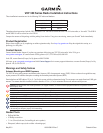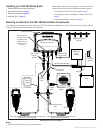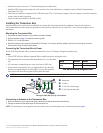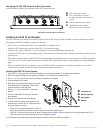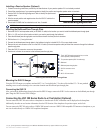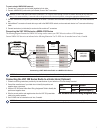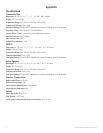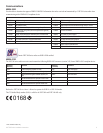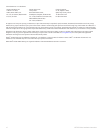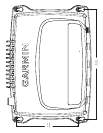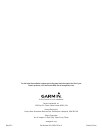
6 VHF 300 Series Installation Instructions
Connecting the VHF 300 Series Radio to a NMEA 2000 Network
You can connect the VHF 300 series radio to your existing NMEA 2000 network, or you can build a basic NMEA 2000 network to connect to
another NMEA 2000-compatible device, such as a chartplotter. For more information on NMEA 2000 and to purchase required connectors, go
to www.garmin.com.
To connect the VHF 300 series radio to your existing NMEA 2000 network:
1. Determine where you would like to connect the radio to your existing NMEA 2000 backbone.
2. Disconnect one side of a NMEA 2000 T-connector from the backbone at an appropriate location.
If you need to extend the NMEA 2000 backbone, connect an appropriate NMEA 2000 backbone extension cable to the side of the
T-connector you disconnected.
3. Add a T-connector (not included) for the radio to the NMEA 2000 backbone by connecting it to the side of the T-connector you disconnected.
4. Route a NMEA 2000 drop cable (not included) to the bottom of the T-connector added in step 3 to your NMEA 2000 network. Use a drop
cable with a length up to 20 ft. (6 m).
5. Connect the drop cable to the T-connector and the NMEA 2000 port on the VHF 300 Series transceiver box.
NOTICE: If you have an existing NMEA 2000 network on your boat, it should already be connected to power. Do not connect an additional NMEA
2000 power cable to an existing NMEA 2000 network, because only one power source should be connected to a NMEA 2000 network.
➊
VHF 300 series transceiver box
➋
NMEA 2000 device (not included)
➌
Drop cable (not included)
➍
T-connector (not included)
➎
Existing NMEA 2000 network
➏
Ignition or in-line switch
➐
Fuse
➑
12 Vdc battery
➒
NMEA 2000 power cable (not included)
➓
Terminator (not included)
Creating a Basic NMEA 2000 Network
+
-
➊
➋
➌
➍
➏
➐
➑
➒
➓
➓
➊
➋
➋
➌
➍
➎
Connecting the VHF 300 Series Radio to an
Existing NMEA 2000 Network



